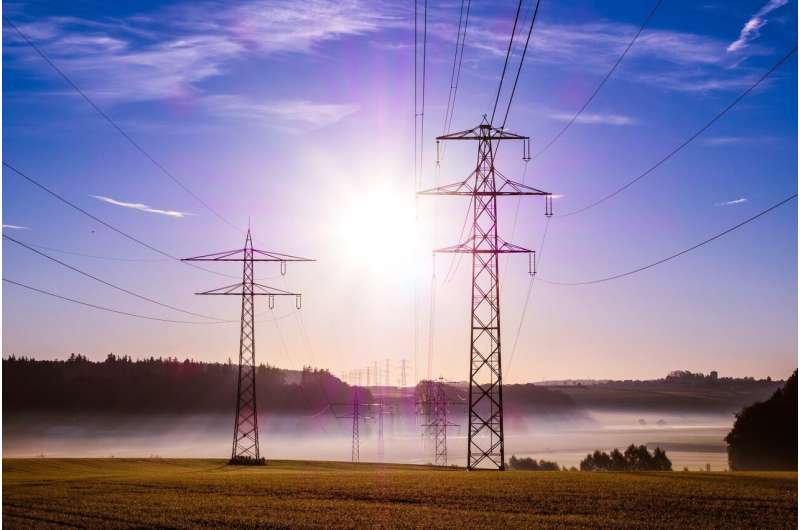
Utility companies in the United States could double electric transmission capacity by 2035 by replacing existing transmission lines with those made from advanced materials, according to a new study published today in the Proceedings of the National Academy of Sciences.
Led by Duncan Callaway, professor and chair of the Energy and Resources Group (ERG), and Amol Phadke, an affiliate and senior scientist at the Goldman School of Public Policy, the first-of-its-kind study details a faster and more cost-effective way to expand the grid and connect the more than 1,200 gigawatts of renewable energy projects awaiting approval.
The analysis was first published last December as a working paper by the Energy Institute at Haas and has been covered by the New York Times, the Washington Post, Heatmap News, and other news outlets.
"Expanding transmission capacity is critical to decarbonization, and we sought to study ways to build it faster and cheaper," said Callaway.
It currently takes 10 to 15 years to build a new power line and the US is building transmission lines at a lower rate than it was in the past decade. Without sufficient capacity, renewable energy projects often sit in limbo for years as transmission operators study what upgrades—if any—are needed to accommodate the increased loads.
The authors modeled various scenarios to determine if replacing existing transmission conductors with those made with advanced composite-core materials—a process known as reconductoring—could provide a pathway to faster grid expansion.
Several reconductoring projects have been initiated in Belgium and the Netherlands, and utility companies in the US have used the material to string transmission lines across wide spans like river crossings. That technology, however, has not made its way to the majority of overhead power lines that feed residential and commercial customers.
"As we learned more about the technology, we realized that no one had done the detailed modeling needed to understand the technology's potential for large-scale transmission capacity increases," said Phadke.
Based on the authors' projections, it is cheaper—and quicker—for utility companies to replace the 53,000 existing transmission lines with advanced composite-core materials than it is to build entirely new transmission lines. They assert that doing so would reduce wholesale electricity costs by 3% to 4% on average—translating to $85 billion in system cost savings by 2035 and $180 billion by 2050.
"The level of interest we've received from federal and state agencies, transmission companies and utilities is extremely encouraging, and since our initial report, the Department of Energy has committed hundreds of millions of dollars to reconductoring projects.
"We are looking forward to learning about these projects as they unfold," said co-author Emilia Chojkiewicz, a Ph.D. student in ERG and an affiliate of the Goldman School of Public Policy.
Additional co-authors include Nikit Abhyankar and Umed Paliwal, affiliates at the Goldman School of Public Policy; and Casey Baker and Ric O'Connell of GridLab, a nonprofit that provides comprehensive technical grid expertise to policy makers and advocates.
More information: Emilia Chojkiewicz et al, Accelerating transmission capacity expansion by using advanced conductors in existing right-of-way, Proceedings of the National Academy of Sciences (2024). DOI: 10.1073/pnas.2411207121
Citation: How US utility companies could double electric transmission capacity by 2035 (2024, September 25) retrieved 25 September 2024 from https://techxplore.com/news/2024-09-companies-electric-transmission-capacity.html
This document is subject to copyright. Apart from any fair dealing for the purpose of private study or research, no part may be reproduced without the written permission. The content is provided for information purposes only.
